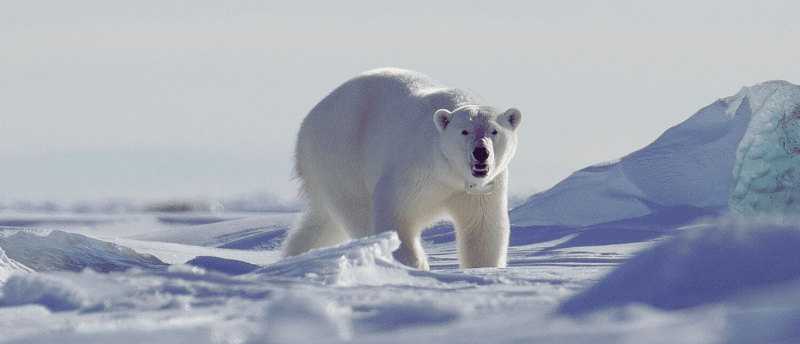Breaking the ice-repelling secrets of polar bear fur

Low ice adhesion properties of polar bear fur sebum offer sustainable solutions for preventing ice buildup on infrastructure.
An international research team investigated the ice-repelling features of polar bear fur in the Arctic. The team found that the components of the fur’s sebum – oil produced by the skin that coats polar bear fur – led to low ice adhesion, offering a natural solution for preventing ice buildup on infrastructure.
The polar bear, equipped with blubber and layers of fur, is the only land mammal in the Arctic that dives into the water as part of its hunting strategy, yet their fur is typically observed to be free of ice. Indigenous knowledge about polar bears and reports on polar bear behaviors have led to questions about the potential ice-repelling properties of their fur; however, no studies have been reported on the topic.
 A little poop goes a long way: vicuñas boost ecosystem recovery
A little poop goes a long way: vicuñas boost ecosystem recovery
Vicuña poop is helping ecosystems adapt to melting glaciers.
That’s why the international team sought to uncover these properties and build upon the existing knowledge. The team started by measuring the ice adhesion strength before and after the fur’s sebum was removed, finding that fur washed of sebum had an ice adhesion strength four times higher than fur that contained sebum, which had low ice adhesion strength comparable to high-performance fluorocarbon coatings used in sports and industry.
Fur hydrophobicity and freezing delay time were also investigated, but no great differences were found between the fur and the controls of human hair and ski skins, indicating the crucial role of the sebum in imparting low ice adhesion.
Next, the team performed lipid analyses and quantum chemical calculations on the sebum using techniques such as gas chromatography-mass spectrometry (GC-MS), liquid chromatography-mass spectrometry (LC-MS/MS) and nuclear magnetic resonance (NMR) to explore the components of the sebum that might enable these ice-repelling properties. The team found that the sebum was composed of a unique mix of lipids, abundant in cholesterol and diacylglycerols and notedly absent in squalene, a common lipid in other marine mammals.
“It’s fascinating to see how evolution has optimized the sebum’s composition to avoid ice adhesion. We found squalene, a common lipid in other marine mammals, was almost entirely absent in polar bear fur. Our computational simulations revealed squalene strongly adheres to ice, and this absence significantly enhances the fur’s ice-shedding properties,” commented Marco Sacchi (University of Surrey).
The work carried out by the team unlocks exciting opportunities for the development of sustainable methods to combat ice buildup and highlights the importance of knowledge and insights from Indigenous communities.
